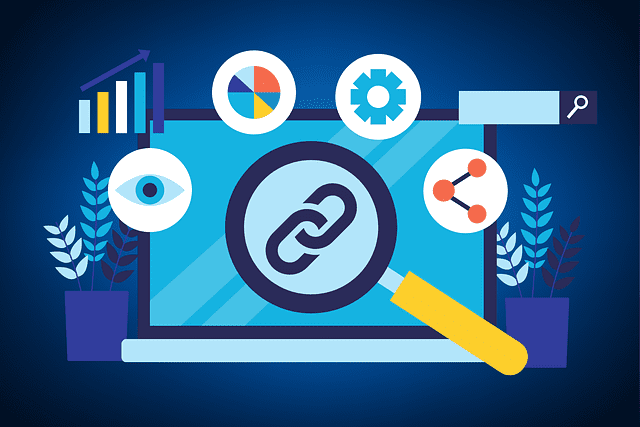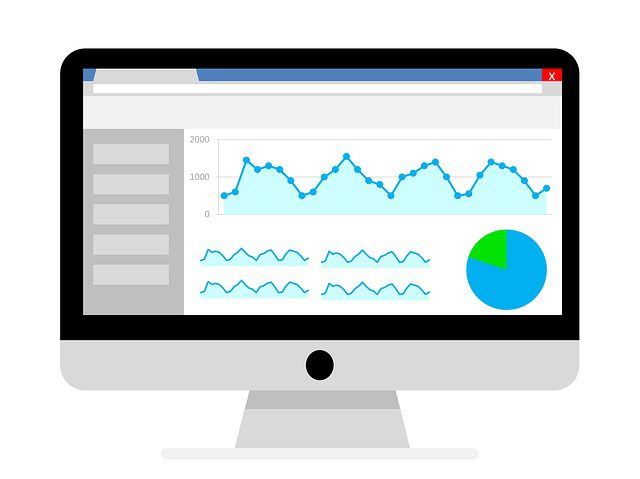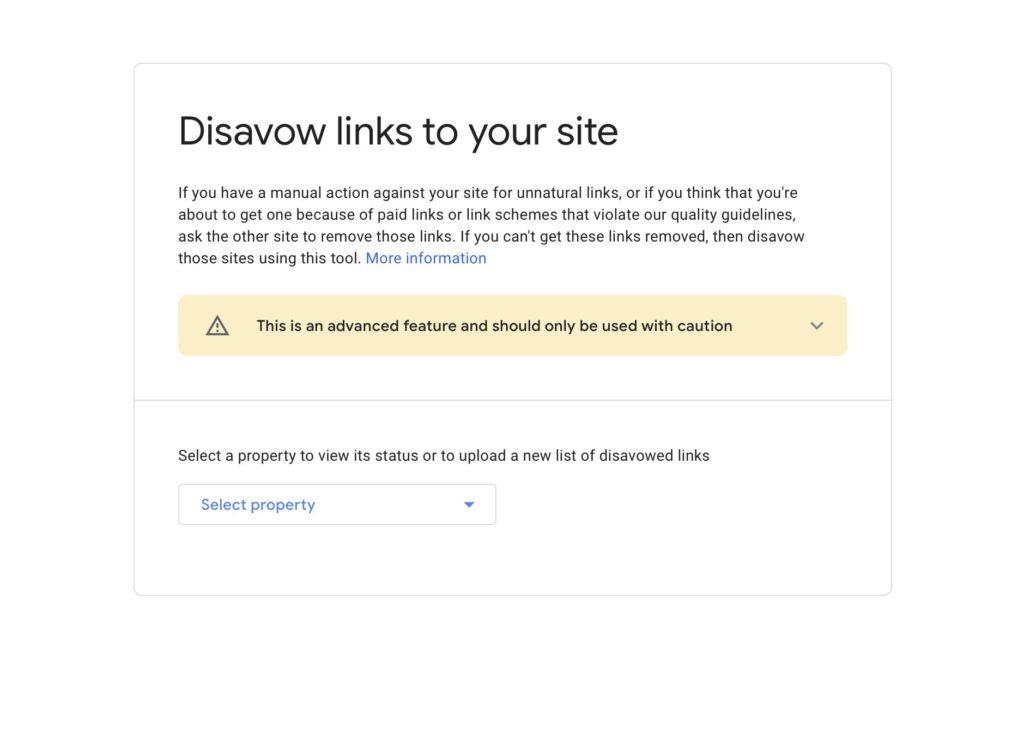Mastering the Art of Clean Backlinks
Unveiling the Secrets of Spammy Links and Unleashing the Power of Google Disavow Link Tool to Remove Toxic Backlinks
The importance of backlinks in SEO
Backlinks are an integral component of search engine optimization (SEO) and hold significant importance in determining the credibility and visibility of a website. Essentially, backlinks are links that originate from external websites and direct users to your own site. Search engines, such as Google, consider these backlinks as endorsements or votes of confidence for your content, indicating its relevance, authority, and trustworthiness. As a result, backlinks have a profound impact on your website’s organic search rankings and overall online visibility.
However, it’s important to note that not all backlinks are created equal. The rise of spam links and spammy backlinks has necessitated the evolution of search engine algorithms to prioritize link quality. Spam links refer to low-quality, irrelevant, or manipulative links that are intended to deceive search engines and artificially inflate a website’s rankings. These spammy backlinks can undermine the integrity of a website’s backlink profile and harm its SEO efforts.
The quality of backlinks is critical in determining their impact on SEO. Reputable and authoritative websites that link to your site are viewed as credible sources of information, leading to positive signals to search engines.
The need for the Google Disavow Tool & Backlink Cleanup
The Google Disavow Tool is a powerful resource provided by Google to webmasters and SEO professionals, designed to address the challenges posed by spammy backlinks and safeguard the integrity of a website’s backlink profile. It serves as a proactive measure to combat the negative impact of low-quality or toxic backlinks and provides webmasters with a way to communicate to search engines which links should be disregarded when assessing a website’s rankings.
While backlinks are a crucial element of SEO, not all links pointing to a website are desirable or beneficial. In fact, spammy backlinks can have a detrimental effect on a website’s reputation, organic rankings, and overall online visibility. Spammy backlinks often originate from low-quality or irrelevant websites, link farms, or sites engaged in manipulative link-building practices. These links are typically intended to manipulate search engine rankings, violate search engine guidelines, or compromise the user experience.
This tool offers webmasters an opportunity to disassociate their website from these spammy backlinks and signal to search engines that they should not be considered when evaluating a website’s rankings. By utilizing the Disavow Tool, webmasters can provide Google with a list of specific URLs or domains that they wish to disavow or ignore.
The need for the Google Disavow Link Tool arises from several key factors:
- Cleaning Up a Backlink Profile: Over time, a website’s backlink profile may accumulate spammy or harmful links due to factors beyond the webmaster’s control. The Disavow Tool enables webmasters to clean up their backlink profile and mitigate the negative impact caused by these links.
- Addressing Negative SEO: In some cases, competitors or malicious actors may engage in negative SEO tactics, deliberately creating spammy backlinks to manipulate a website’s rankings. The Disavow Tool allows webmasters to combat these tactics and safeguard their website’s SEO performance.
- Recovering from Penalties: If a website has been penalized by Google due to the presence of spammy backlinks, utilizing the Disavow Tool can be a crucial step towards recovering from the penalty. By disavowing the harmful links and submitting a reconsideration request, webmasters can demonstrate their commitment to adhering to search engine guidelines.
- Adapting to Algorithm Updates: Search engine algorithms are constantly evolving to provide users with the most relevant and trustworthy search results. The Disavow Tool offers webmasters a means to adapt to algorithm updates by addressing and disavowing links that may have been acceptable in the past but no longer comply with the current guidelines.
- Maintaining Link Quality: By regularly auditing and disavowing spammy backlinks, webmasters can maintain a healthy and high-quality backlink profile. This proactive approach helps to ensure that the website is not associated with low-quality or harmful links, protecting its reputation and organic search rankings.
Differentiating between natural and spammy links
There are factors to consider when trying to identify link spam:
- Relevance: Natural links are typically from websites or pages that are relevant to your content or industry. They are genuine endorsements or citations from authoritative sources within your niche. On the other hand, spammy links often come from unrelated or low-quality websites that have no logical connection to your content.
- Source Authority: Natural links often originate from reputable websites with a strong online presence and a history of providing valuable content. These websites are trusted by search engines and have earned their authority over time. Spammy links, however, usually come from low-quality, untrustworthy, or newly created websites lacking credibility.
- Link Placement: Natural links are usually placed within the body of the content where they provide additional value to the reader. They are contextual and integrated naturally into the flow of the text. Spammy links, on the other hand, are often placed in irrelevant or hidden areas of a webpage, such as footers, sidebars, or comment sections.
- Anchor Text: Natural links tend to have anchor text that accurately reflects the content they are linking to. The anchor text is descriptive and relevant to the linked page. In contrast, spammy or unnatural links may use generic or keyword-stuffed anchor text that is unrelated to the content, aiming to manipulate search engine rankings.
Here are some common types of spammy links to be cautious of:
- Paid Links: These are links acquired through monetary transactions, where websites pay for backlinks to manipulate search engine rankings. Such links violate search engine guidelines and can lead to penalties.
- Link Farms: Link farms are networks of websites that exist solely for the purpose of generating links, often using automated tools. These links lack relevance and are considered low-quality by search engines.
- Comment Spam: Comment sections of blogs, forums, or websites can be targeted by spammers who leave irrelevant or generic comments with links back to their own websites. These links are typically of low quality and can harm your site’s reputation.
- Low-Quality Directories: Some online directories offer little to no editorial oversight and accept submissions from any website, regardless of quality or relevance. Links from these directories are usually considered spammy and may have a negative impact on SEO.
- Link Exchanges: In a link exchange scheme, websites agree to link to each other, often in an attempt to manipulate search engine rankings. These reciprocal links are typically seen as unnatural and can be considered spammy.
- Article Directories: Article directories used to be popular for link building purposes, but many of them have become repositories for low-quality, duplicate, or spun content. Links from these directories are generally not valuable and may even be harmful.
Understanding the Impact of Spammy Links
When Google identifies bad links on a website, they may impose penalties as a means to discourage manipulative SEO practices and maintain the quality of their search results. The specific penalties can vary in severity depending on the nature and extent of the spammy links. Here are some common ways Google may penalize a website:
- Manual Action: If a manual review by Google’s web spam team detects spammy links or other violations of their guidelines, they may impose a manual action. This can result in a significant drop in organic search rankings or even a complete removal of the website from Google’s index.
- Algorithmic Penalties: Google’s algorithms, such as Penguin, are designed to automatically identify and penalize websites with spammy link profiles. If your website is affected by an algorithmic penalty, you may experience a decline in organic search visibility and rankings.
- Devaluation of Links: Instead of penalizing the entire website, Google may devalue the specific spammy links. This means that those links will carry little to no weight in terms of improving search rankings and may not provide any SEO benefits.
- Lowered Trust and Authority: Spammy links can erode a website’s trust and authority in the eyes of search engines. As a result, the website’s overall visibility and ranking potential may be negatively impacted.
- Negative Impact on User Experience: If spammy links lead to websites with malicious content, phishing attempts, or other harmful activities, Google may take user experience into account and penalize the website accordingly. This can result in decreased visibility and rankings.
Identifying Spammy Links – Conducting a backlink audit to disavow links
Conducting a backlink audit is an essential step in understanding the quality and composition of the links pointing to your website. Once you know who/what links to your website you can prepare to disavow links which identifies toxic backlinks. Here’s a general process to conduct a backlink audit:
- Gather Backlink Data: Start by collecting all available backlink data for your website. The primary sources of this data include Google Search Console (GSC), third-party SEO tools (e.g., Ahrefs, SEMrush, SERanking), and any other link monitoring tools you might be using.
- Review the Link Sources: Analyze the websites listed in your link audit. Assess their relevance, authority, and trustworthiness. Focus on identifying any spam websites or low-quality link sources. often times these software audits will identify toxic backlinks and label them as such. It is important to identify all the links pointing to your website. Some will be good links and some will be bad backlinks. Further investigation by you will determine which category they full under.
- Evaluate Link Metrics: Utilize SEO tools to examine important metrics for each incoming link, such as domain authority, page authority, spam score, and traffic estimates. These metrics can help you gauge the quality and potential impact of the links.
- Identify Spammy or Low-Quality Links: Look for common indicators of spammy or low-quality links. These may include links from link farms, directories with low editorial standards, or websites with unrelated content or excessive outbound links.
- Assess Anchor Text: Examine the anchor text used in the backlinks. Ensure it is diverse, natural, and relevant to the linked page. Look for any instances of keyword stuffing or suspiciously optimized anchor text.
- Check for Broken or Redirected Links: Identify any broken or redirected links that may lead to 404 error pages or irrelevant destinations. These links should be updated or removed.
- Analyze Link Patterns: Look for patterns in the link profile, such as an unusually high volume of links from a single domain or a sudden influx of links within a short period. Unnatural link patterns can be a red flag.
- Consider Context and Relevance: Evaluate whether the content surrounding the backlinks aligns with your website’s niche or topics. Links from contextually relevant sources tend to carry more weight and value.
- Document Findings: Maintain a record of your findings, including the identified spammy or low-quality links, their sources, and any other relevant information. This documentation will be helpful for the next steps.
Utilizing Google Search Console
While GSC provides valuable insights into your website’s backlinks, relying solely on it may not provide a comprehensive view of your backlink profile. GSC offers a limited sample of the backlinks that Google has discovered for your site. It may not capture all the backlinks pointing to your website, especially those from less prominent or newly indexed websites. It also doesn’t offer the easy to use process that some of the other paid options offer.
Third-party tools for link analysis
Google’s Disavow Tool: What is the Google Disavow Tool and how do you use it to disavow links?
The Google Disavow Tool is a webmaster tool provided by Google that allows website owners to request the search engine to ignore or disavow specific backlinks pointing to their site. It provides a means to communicate to Google that certain links should not be considered when evaluating a website’s ranking and should be disregarded – disavowing links.
The Disavow Tool was introduced by Google in 2012 as a response to the increasing prevalence of spammy and low-quality backlinks that were being used to manipulate search engine rankings. By allowing webmasters to identify link spam and disavow unnatural links, Google aimed to provide a mechanism for website owners to protect their sites from potential penalties resulting from manipulative link-building practices.
How does it work?
The Google Disavow Tool provides website owners with a way to communicate to Google which specific backlinks they want to disassociate or disavow from their website. When you identify spammy links and then submit a disavow file through the tool, you are essentially requesting Google to ignore those particular links when evaluating your website’s ranking. You can monitor the Google disavow file once it is uploaded into google.
Creating a Disavow File: Best practices for disavowing links
Once you have identified the problematic links, you need to compile them into a text file with the .txt extension. In this file, you will list the URLs or domains of the links you want to disavow. You can disavow specific URLs or entire domains. Creating a disavow file to submit to Google is a relatively straightforward process. Here’s a step-by-step guide for disavowing links:
- Open a Text Editor: Start by opening a text editor on your computer. You can use a simple text editor like Notepad (Windows) or TextEdit (Mac). Avoid using word processors like Microsoft Word, as they may add formatting that can interfere with the disavow file.
- List the URLs or Domains: In the text editor, list the URLs or domains of the backlinks you want to disavow. Each entry should be on a separate line. You can disavow specific URLs or entire domains.
- Format the Entries: Google’s Disavow Tool accepts specific formatting for the entries in the disavow file. Here are a few guidelines to follow:
- To disavow a specific URL, start the entry with “disavow:” followed by the full URL. For example: “disavow: http://example.com/spammy-page.html”.
- To disavow an entire domain, start the entry with “domain:” followed by the domain name. For example: “domain: spammydomain.com”.
- You can also use comments in the file by starting the line with a “#” symbol. These comments can be helpful for documentation purposes or to provide additional context. For example: “# Disavowing spammy backlinks from a link exchange network”.
- Save the File: Once you have added all the desired entries to the disavow file, save it with a .txt extension. For example, “disavow.txt”. Make sure the file is saved in plain text format without any special formatting or extensions.
Accessing the Disavow Tool in Google Search Console, Uploading and submitting the disavow file, Confirming successful submission
Accessing the Disavow Tool in Google Search Console:
- Log in to your GSC account. If you haven’t set up an account for your website, you’ll need to do so and verify ownership.
- Once logged in, select the website property for which you want to access the Disavow Tool.
- In the left-hand sidebar, navigate to the “Links” section and click on “Disavow Links”. This will take you to the Disavow Tool page.
Uploading and Submitting the Disavow File for Link Removal:
- On the Disavow Tool page, you’ll see a button or link that allows you to upload your bad links / disavow file. Click on it to begin the upload process.
- Choose the disavow file you created earlier from your computer. Ensure that the file is in the correct format with a .txt extension and contains the list of URLs or domains you want to disavow.
- After selecting the disavow file, click on the “Submit” or “Upload” button to initiate the submission process.
Confirming Successful Submission:
- Once you submit the disavow file, Google will process it and update their understanding of your backlink profile over time. The actual time it takes for the changes to reflect in search rankings can vary.
- Google does not provide an immediate confirmation or notification of the successful submission. However, you can check the Disavow Tool periodically to ensure that the file has been successfully uploaded and processed.
- To confirm the status of your disavow file, revisit the Disavow Tool in Google Search Console. If the file has been successfully processed, you should see the list of uploaded disavow domains or URLs on the page.
- Keep in mind that the Disavow Tool is designed to be used with caution and as a last resort. It’s important to regularly monitor your backlink profile, assess new links, and consider the impact of any disavow decisions you make.
Remember, the Disavow Tool is just one aspect of managing your bad links / backlink profile. It’s essential to focus on building high-quality, relevant, and natural backlinks while regularly conducting backlink audits to maintain a healthy and authoritative link profile.
Monitoring and Reconsideration: Tracking disavowed links
Once you have submitted a disavow file through the Google Disavow Tool to remove or disassociate specific links from your website (disavow links), it is important to monitor the impact of your disavowal efforts. Tracking disavowed links allows you to assess how search engines are treating those links and evaluate the effectiveness of your disavow decisions. Here’s how you can monitor disavowed links:
- Google Search Console: Use Google Search Console to monitor your website’s performance and track changes in rankings, organic traffic, and impressions. While Search Console may not provide detailed information on individual disavowed links, it can give you a broader understanding of how your website is performing after the disavowal.
- Third-Party Backlink Analysis Tools: Utilize third-party backlink analysis tools as mentioned above in this article.
- Regular Audits: Conduct regular backlink audits to evaluate the effectiveness of your disavowal efforts. Compare your current backlink profile with previous audits to identify any changes or patterns. This will help you assess whether the disavowed links have been appropriately processed by search engines.
- Work with an SEO agency like Reinhardt Designs. We are happy to walk you through this process of disavowing links. Learn more about our SEO services. Believe it or not, most websites have low quality links. We can help you identify spam sites, unnatural links and remediate the issue.
In addition to monitoring, it is important to note that the disavowal process does not guarantee immediate results. It may take time for search engines to recrawl and reevaluate your website’s backlink profile. Patience is crucial, and it is recommended to monitor your website’s performance over an extended period to assess the long-term impact of the disavowal. Contact Reinhardt Designs if you need a website audit or help to disavow spammy links.






